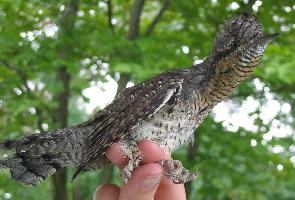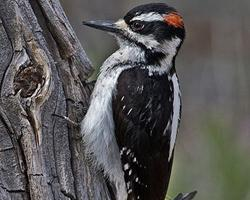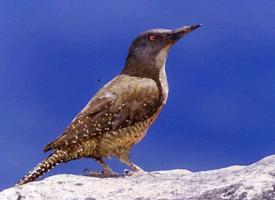
Starea de conservare
| Amenințat |
Descrierea animalului
The Eurasian wryneck (Jynx torquilla) is a fascinating and unique species of bird, belonging to the woodpecker family, Picidae. Despite its family ties, the Eurasian wryneck exhibits some behaviors and characteristics that are quite distinct from the typical woodpeckers. This bird is primarily known for its remarkable ability to twist its neck almost 180 degrees, a feature that is not only intriguing but also serves as a defensive mechanism against predators. This peculiar behavior, coupled with its cryptic plumage, makes the Eurasian wryneck a subject of interest among birdwatchers and ornithologists.Physically, the Eurasian wryneck is a small to medium-sized bird, measuring about 16 to 17 cm in length. Its plumage is predominantly a mix of earthy tones—browns, grays, and buffs, which provide excellent camouflage against the bark of trees and the forest floor. The bird's back is adorned with intricate patterns that resemble bark or lichen, further enhancing its ability to remain unnoticed. Unlike other woodpeckers, the Eurasian wryneck does not have the bright, flashy colors often seen in its relatives. It has a slender, somewhat downcurved bill, which is well-suited for extracting insects from crevices in the bark, and its tongue is long and sticky, ideal for catching prey.
One of the most remarkable aspects of the Eurasian wryneck's behavior is its mating and nesting habits. It is one of the few woodpecker species that do not carve out their own nesting holes. Instead, it prefers to take over abandoned cavities in trees, previously made by other woodpeckers or natural processes. During the breeding season, which typically occurs from late April to July, the male Eurasian wryneck performs an elaborate display to attract a mate, which includes vocalizations, neck twisting, and body posturing.
The Eurasian wryneck's diet primarily consists of ants and other small insects. Its specialized tongue and the ability to twist its neck in various directions allow it to forage effectively, making it a proficient hunter. This diet is beneficial for controlling insect populations, highlighting the bird's importance in maintaining ecological balance.
Geographically, the Eurasian wryneck has a wide range that spans across Europe, Asia, and parts of North Africa. It is a migratory bird, with populations moving southwards to Sub-Saharan Africa, the Indian subcontinent, and Southeast Asia to overwinter. The bird's habitat preferences are quite diverse, including open woodlands, orchards, parks, and gardens, as long as there are suitable nesting sites and an abundance of food.
Despite its wide range and adaptability, the Eurasian wryneck faces threats from habitat loss and degradation, primarily due to agricultural expansion, deforestation, and urbanization. Conservation efforts are crucial to ensure the survival of this unique species, emphasizing the importance of preserving its natural habitats and nesting sites.
In summary, the Eurasian wryneck (Jynx torquilla) is a captivating species with unique adaptations and behaviors that set it apart from other woodpeckers. Its ability to twist its neck, cryptic plumage, and specialized feeding habits make it an intriguing subject for study and observation. As with many species, understanding and protecting its natural habitat is key to ensuring its continued survival and presence in the wild.
Harta răspândirii

Animale similare
Fotografii noi cu animale
Top 10 animale
- Dolphin gull (Leucophaeus scoresbii)
- Diana monkey (Cercopithecus diana)
- Moustached guenon (Cercopithecus cephus)
- Galápagos tortoise (Geochelone nigra complex)
- Stone loach (Barbatula barbatula)
- Greek tortoise (Testudo graeca)
- Japanese macaque (Macaca fuscata)
- Russian tortoise (Testudo horsfieldii)
- Common flying dragon (Draco volans)
- Galápagos penguin (Spheniscus mendiculus)


